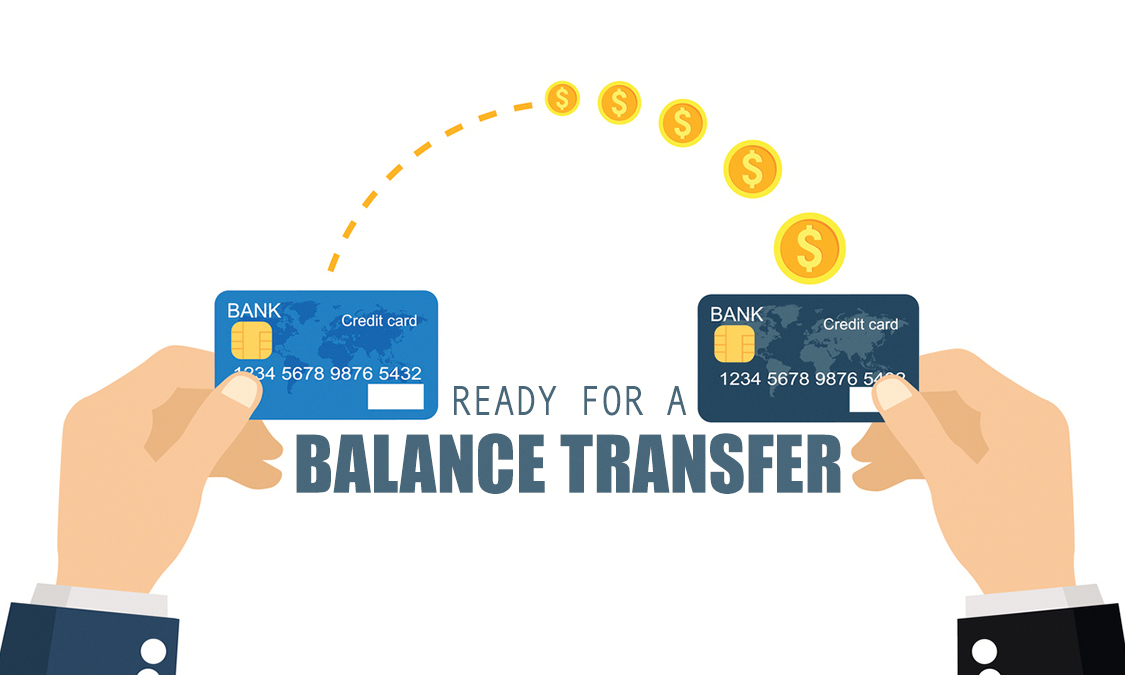
- What are Balance Transfer Credit Cards?
- How Balance Transfer Credit Cards Work
- Factors to Consider When Choosing a Balance Transfer Credit Card
- Using a Balance Transfer Credit Card Strategically
- Alternatives to Balance Transfer Credit Cards
- Last Point: Balance Transfer Credit Cards
- Frequently Asked Questions
Balance transfer credit cards present a compelling opportunity to tackle high-interest debt, offering the chance to consolidate multiple balances onto a single card with a lower interest rate. This strategy can potentially save you significant money on interest charges, accelerating your journey to becoming debt-free. However, like any financial tool, balance transfer cards come with their own set of considerations, including introductory periods, transfer fees, and potential pitfalls if not used strategically.
This guide delves into the intricacies of balance transfer credit cards, providing a comprehensive understanding of their workings, benefits, drawbacks, and how to leverage them effectively. We’ll explore the crucial factors to consider when choosing a card, outlining the essential features that can make or break your debt reduction strategy. Additionally, we’ll discuss alternative debt consolidation options, enabling you to make informed decisions based on your individual circumstances.
What are Balance Transfer Credit Cards?
Balance transfer credit cards are a type of credit card designed to help you consolidate debt from other credit cards into a single account with a lower interest rate. This can save you money on interest charges and help you pay off your debt faster.
Balance transfer credit cards offer a temporary introductory interest rate, usually 0% for a specific period. This period can range from 6 months to 21 months or even longer, depending on the card issuer. After the introductory period, the interest rate reverts to the standard APR (Annual Percentage Rate) for the card.
Benefits of Balance Transfer Credit Cards
Balance transfer credit cards can be beneficial for individuals looking to reduce their interest payments and pay off debt faster. Here are some of the advantages:
- Lower Interest Rates: The introductory 0% APR allows you to save money on interest charges, which can significantly reduce your overall debt burden. You can use the money saved to pay down the principal balance faster.
- Debt Consolidation: Consolidating multiple credit card balances into a single account simplifies debt management and makes it easier to track your progress. This can be particularly helpful if you have several cards with different interest rates and minimum payments.
- Improved Credit Utilization: By transferring balances to a new card, you can potentially reduce your credit utilization ratio. This is the percentage of your available credit that you are using, and it can impact your credit score. A lower credit utilization ratio generally leads to a better credit score.
Potential Drawbacks of Balance Transfer Credit Cards
While balance transfer credit cards offer several advantages, it’s important to consider their potential drawbacks:
- Balance Transfer Fees: Most balance transfer credit cards charge a fee, typically a percentage of the transferred balance. This fee can be significant, especially for large balances.
- Introductory Period Expiration: The 0% APR period is temporary. Once it expires, the interest rate will revert to the standard APR, which can be significantly higher than the introductory rate. If you don’t pay off the balance before the introductory period ends, you’ll start accruing interest at the higher rate.
- Credit Score Impact: Applying for a new credit card can temporarily lower your credit score, as it represents a hard inquiry on your credit report. However, if you manage the card responsibly, your credit score should improve over time.
How Balance Transfer Credit Cards Work

Balance transfer credit cards offer a way to consolidate high-interest debt from other credit cards onto a single card with a lower interest rate. This can save you money on interest charges and help you pay off your debt faster.
The Process of Transferring a Balance
Transferring a balance involves moving the outstanding debt from your existing credit card to a new balance transfer credit card. This process typically involves the following steps:
- Apply for a balance transfer card: Choose a card with a low introductory interest rate and favorable terms. Submit an application and get approved.
- Get your new card: Once approved, you’ll receive your new balance transfer card in the mail.
- Request a balance transfer: Contact the issuer of your new card and provide them with the account details of the card you want to transfer the balance from.
- The balance is transferred: The issuer of the new card will transfer the balance from your existing card to your new account.
Introductory Interest Rates and Their Duration
Balance transfer credit cards often offer introductory interest rates that are significantly lower than standard interest rates. These introductory rates are typically valid for a limited period, often ranging from 6 to 18 months.
After the introductory period expires, the interest rate will revert to the card’s standard APR (Annual Percentage Rate). This rate can be significantly higher than the introductory rate, so it’s crucial to pay off the balance before the promotional period ends.
For example, a card might offer a 0% APR for 12 months on balance transfers. After the 12 months, the interest rate could jump to 18%.
Fees Associated with Balance Transfers
Balance transfers are not always free. Many cards charge a balance transfer fee, which is typically a percentage of the transferred amount. This fee can range from 1% to 5%, depending on the card issuer and the specific offer.
For example, a balance transfer fee of 3% on a $5,000 balance would cost you $150.
Additionally, some cards may charge a fee for each balance transfer request. This fee is typically a fixed amount, such as $5 or $10.
It’s important to carefully review the terms and conditions of any balance transfer credit card offer before you transfer your balance. Be sure to understand the introductory interest rate, the duration of the promotional period, and any associated fees.
Factors to Consider When Choosing a Balance Transfer Credit Card
Choosing the right balance transfer credit card can save you significant money on interest charges, but it’s crucial to consider several factors before making a decision. Understanding the key features and comparing different options will help you find the best card for your needs.
Interest Rate
The interest rate is the most important factor to consider when choosing a balance transfer credit card. A lower interest rate means you’ll pay less in interest charges over time.
- Look for cards with an introductory 0% APR period, which can last anywhere from 6 to 21 months. This allows you to transfer your balance and pay it off without accruing interest during the promotional period.
- After the introductory period, the interest rate will revert to the standard APR, which can be significantly higher. It’s essential to pay off as much of the balance as possible during the introductory period to minimize interest charges.
- Compare the APRs of different cards and choose the one with the lowest rate, both during the introductory period and after it expires.
Transfer Fee
Balance transfer credit cards typically charge a transfer fee, usually a percentage of the balance you transfer.
- This fee can range from 3% to 5% of the balance transferred. It’s essential to factor in the transfer fee when calculating the total cost of transferring your balance.
- Some cards offer a fee-free balance transfer period, usually for the first few months. This can be a significant advantage, especially if you have a large balance to transfer.
- Compare the transfer fees of different cards and choose the one with the lowest fee, or consider waiting for a fee-free period if available.
Credit Limit
The credit limit is the maximum amount of credit you’re approved for on the card.
- Ensure the credit limit is sufficient to cover the balance you want to transfer.
- A higher credit limit can provide more flexibility and reduce the risk of exceeding your limit, which can lead to additional fees and penalties.
- Check your credit score and credit history before applying for a balance transfer credit card. A higher credit score can improve your chances of getting approved for a card with a higher credit limit.
Other Important Features
In addition to interest rate, transfer fee, and credit limit, other features to consider include:
- Rewards program: Some balance transfer cards offer rewards programs, such as cash back or points. These can provide additional value, but they may not be as significant as the savings from a lower interest rate.
- Annual fee: Some balance transfer cards charge an annual fee. Compare the annual fees of different cards and choose the one with the lowest fee, or consider a card with no annual fee.
- Customer service: Choose a card issuer with a reputation for excellent customer service. This is especially important if you have any issues with the card or the transfer process.
Terms and Conditions
It’s crucial to read the terms and conditions carefully before applying for a balance transfer credit card.
- Pay attention to the introductory APR period, the standard APR, and the transfer fee.
- Check for any restrictions on the types of balances you can transfer, such as whether you can transfer balances from other credit cards or loans.
- Understand the consequences of missing a payment or exceeding your credit limit.
Using a Balance Transfer Credit Card Strategically

A balance transfer credit card can be a powerful tool for reducing debt, but only if you use it strategically. By understanding how these cards work and following some key tips, you can maximize your chances of successfully paying down your debt and saving money on interest.
Making the Most of a Balance Transfer
A balance transfer card can help you reduce debt effectively by offering a lower interest rate than your existing credit cards. To maximize the benefits of a balance transfer, you need to focus on paying down the transferred balance as quickly as possible. Here’s how:
- Set a Realistic Payment Plan: Create a budget that allows you to make more than the minimum payment on your balance transfer card. Aim to pay more than the minimum payment each month, and consider making extra payments whenever possible.
- Prioritize High-Interest Debt: If you have multiple credit cards with high interest rates, prioritize paying down the balance transfer card first, as it has a lower interest rate. This will save you money on interest charges in the long run.
- Avoid New Debt: Once you’ve transferred your balance, resist the urge to use the balance transfer card for new purchases. Focus on paying down the existing balance and avoid adding more debt.
Avoiding Common Pitfalls
It’s essential to be aware of potential pitfalls that can hinder your debt reduction efforts. Here are some common mistakes to avoid:
- Missing Payments: Missing payments on your balance transfer card can result in late fees and increased interest rates. Set reminders and automate payments to ensure timely payments.
- Exceeding the Credit Limit: Exceeding your credit limit can lead to penalties and higher interest rates. Keep track of your spending and avoid exceeding your limit.
- Not Taking Advantage of the Introductory Period: The introductory period on a balance transfer card is usually limited, so make the most of it by paying down as much of the balance as possible before the promotional interest rate expires.
Creating a Plan for Paying Off the Balance, Balance transfer credit cards
Having a clear plan for paying off the transferred balance is crucial. This involves:
- Calculating the Total Interest: Estimate the total interest you’ll pay over the life of the balance transfer card. This will help you understand the cost of the transfer and motivate you to pay it off quickly.
- Setting a Payment Schedule: Determine a payment schedule that fits your budget and allows you to pay off the balance within the introductory period or before the interest rate increases.
- Tracking Your Progress: Regularly track your progress towards paying off the balance. This will help you stay motivated and ensure you’re on track to meet your goals.
Alternatives to Balance Transfer Credit Cards

While balance transfer credit cards can be a helpful tool for debt consolidation, they aren’t the only option available. Depending on your individual circumstances and financial situation, other debt consolidation methods might be more suitable.
Exploring alternative options can help you find the best approach to manage your debt and achieve your financial goals.
Personal Loans
Personal loans are a popular alternative to balance transfer credit cards for debt consolidation. They offer a fixed interest rate and a set repayment period, making it easier to budget and track your progress.
Here’s a breakdown of the pros and cons:
- Pros:
- Fixed interest rates provide predictable monthly payments.
- Longer repayment terms can lower monthly payments.
- Potential for lower interest rates compared to credit cards.
- Simplified debt management with a single monthly payment.
- Cons:
- May require a credit score to qualify for the best rates.
- Origination fees can add to the overall cost of the loan.
- Interest rates may be higher than those offered by balance transfer credit cards.
Debt Consolidation Programs
Debt consolidation programs, often offered by credit counseling agencies, provide a structured approach to managing multiple debts. They work by negotiating with creditors to lower interest rates, consolidate multiple debts into one monthly payment, and potentially reduce the overall amount owed.
Here’s a comparison of the pros and cons:
- Pros:
- Simplified debt management with a single monthly payment.
- Potential for lower interest rates and reduced overall debt.
- Professional guidance and support from credit counselors.
- Cons:
- Fees associated with the program.
- May require a significant commitment to the program.
- Creditors may not always agree to lower interest rates.
Last Point: Balance Transfer Credit Cards
Mastering the art of balance transfer credit cards requires a blend of financial savvy and strategic planning. By carefully evaluating your options, understanding the associated costs, and adhering to a disciplined repayment strategy, you can harness the power of these cards to significantly reduce your debt burden. Remember, responsible utilization and a clear financial roadmap are key to achieving your debt-free goals. This guide has equipped you with the knowledge to make informed choices and navigate the world of balance transfer credit cards with confidence.
Frequently Asked Questions
What is the typical introductory interest rate offered on balance transfer credit cards?
Introductory interest rates on balance transfer cards can range from 0% to a few percentage points. It’s crucial to note that these rates are usually temporary, lasting anywhere from 6 to 18 months.
How long does it take for a balance transfer to be processed?
Balance transfers can take anywhere from a few days to a couple of weeks to process. This timeframe depends on the card issuer and the specific transfer process.
Are there any credit score requirements for balance transfer credit cards?
Yes, most balance transfer credit cards have credit score requirements. Generally, you’ll need a good credit score (typically 670 or higher) to qualify for the best offers.
What are some alternative debt consolidation options besides balance transfer credit cards?
Other options for consolidating debt include personal loans, debt consolidation programs, and debt management plans. Each option has its own advantages and disadvantages, so it’s essential to compare them based on your specific needs and circumstances.





